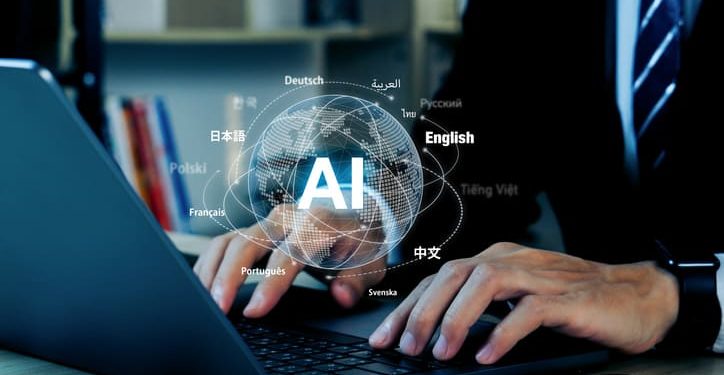Artificial intelligence is everywhere now. Companies use it to screen job applications, approve loans, diagnose medical conditions, and make countless other decisions that affect real people. But here’s the problem—most of these AI systems are black boxes. Nobody really knows how they work, what could go wrong, or whether they’re making fair decisions.
The federal government noticed this gap. When AI systems fail, they can fail spectacularly. They can deny someone a mortgage for reasons nobody understands. They can misidentify people in security footage. They can make recommendations based on biased data that perpetuates discrimination. So the National Institute of Standards and Technology created a framework to help organizations build AI systems that actually deserve trust.
This framework isn’t just another set of rules to ignore. It’s become the reference point for how serious companies approach AI risk. And it breaks down into four core functions that work together to keep AI systems under control.
Understanding the Govern Function
The first step is getting leadership involved. That sounds obvious, but most companies skip right past it. They let data scientists and engineers build AI systems without clear oversight or accountability. Then something goes wrong, and nobody knows who was supposed to be watching.
The Govern function establishes who’s responsible for AI decisions at the highest level. It means creating policies before deploying systems, not scrambling to write them after a problem hits the news. Organizations that take this seriously assign specific roles—who approves new AI projects, who monitors them, who pulls the plug if things go sideways.
This is where companies often benefit from outside expertise. Businesses looking to implement structured approaches often reference nist ai rmf guidelines to establish governance frameworks that match federal expectations. Getting the foundation right matters because everything else builds on top of it.
Good governance also means being honest about what the organization can handle. A small company doesn’t need the same AI oversight structure as a tech giant. But both need someone in charge who understands the risks and has authority to make decisions. That person needs to know what AI systems are running, what they do, and what could happen if they malfunction.
The Map Function Shows You What You’re Actually Dealing With
Once governance is in place, the next step is understanding the specific risks each AI system carries. This is the Map function, and it’s where companies start seeing problems they didn’t know existed.
Every AI system operates in a context. A chatbot helping customers book appointments carries different risks than an AI system deciding who qualifies for insurance. Mapping means looking at that context—who uses the system, what decisions it makes, what happens if it’s wrong, who gets hurt if it fails.
This stage reveals uncomfortable truths. That AI tool for screening resumes might be filtering out qualified candidates based on patterns in old data. The system predicting equipment failures might work great in testing but break down with real-world variations. The algorithm optimizing delivery routes might be making decisions that create safety issues nobody anticipated.
Companies have to document all of this. What data trains the AI? Where does that data come from? What biases might be baked into it? Who’s affected by the system’s outputs? What are the negative impacts if the AI makes mistakes? These aren’t theoretical questions. They need real answers before the system goes live.
Measure Gives You Actual Numbers
The third function is where things get technical, but it’s crucial. Measure means testing AI systems to see how well they actually work—not how well they’re supposed to work, but how they perform in reality.
This goes beyond basic accuracy metrics. Sure, an AI might be right 95% of the time overall, but what if it’s only right 70% of the time for a specific demographic group? What if it works perfectly in testing but degrades over time as conditions change? What if it makes small errors constantly that add up to big problems?
Organizations need to establish metrics before deployment and keep tracking them afterward. How accurate is the system? How fair are its decisions across different groups? How explainable are its outputs? Can someone understand why the AI made a particular choice? How secure is it against attacks or manipulation?
The measurement phase often shows that AI systems need adjustment before they’re ready for real use. Models get retrained. Decision thresholds get recalibrated. Sometimes the whole approach needs rethinking. That’s better than discovering problems after the system is making decisions that affect people’s lives.
Manage Keeps Everything Running Safely
The final function is ongoing. Manage means continuously operating, monitoring, and improving AI systems once they’re deployed. AI isn’t software that stays the same after launch. It changes over time, often in subtle ways that create new risks.
This is where many companies drop the ball. They put effort into building and testing AI systems, then assume those systems will keep working as intended indefinitely. But AI models drift. The world changes. Data patterns shift. What worked six months ago might not work now.
Managing AI systems means watching for these changes and responding to them. It means having processes to handle incidents when they happen—because they will happen. It means regularly reviewing whether the system still serves its intended purpose or whether it needs updates. It means being ready to pause or shut down systems that aren’t performing safely.
This function also includes documentation and transparency. Stakeholders need to know how AI systems work and what to do when problems arise. Users deserve clear information about when they’re interacting with AI and how it affects them. Regulators expect evidence that systems are operating within acceptable parameters.
Why This Framework Matters More Than Ever
These four functions work together as a cycle, not a checklist. Organizations govern their AI strategy, map the risks of specific systems, measure how those systems perform, and manage them continuously. Then they loop back—using what they learned to improve governance, identify new risks, refine measurements, and adjust management practices.
The framework doesn’t eliminate AI risk. Nothing can do that. AI systems will always carry some level of uncertainty and potential for failure. But following a structured approach dramatically reduces the chances of catastrophic problems. It creates accountability, transparency, and clear processes for handling issues before they spiral out of control.
Companies that ignore these steps are gambling. They’re betting that their AI systems won’t cause serious harm, won’t face regulatory scrutiny, and won’t damage their reputation. That’s a bet that more organizations are losing as AI becomes more powerful and more visible.
The federal standards aren’t perfect, and they’ll keep changing as AI technology advances. But right now, they represent the most comprehensive thinking available about how to build AI systems that deserve trust. Organizations serious about using AI responsibly are paying attention to this framework—not because they have to, but because it actually works.













































































